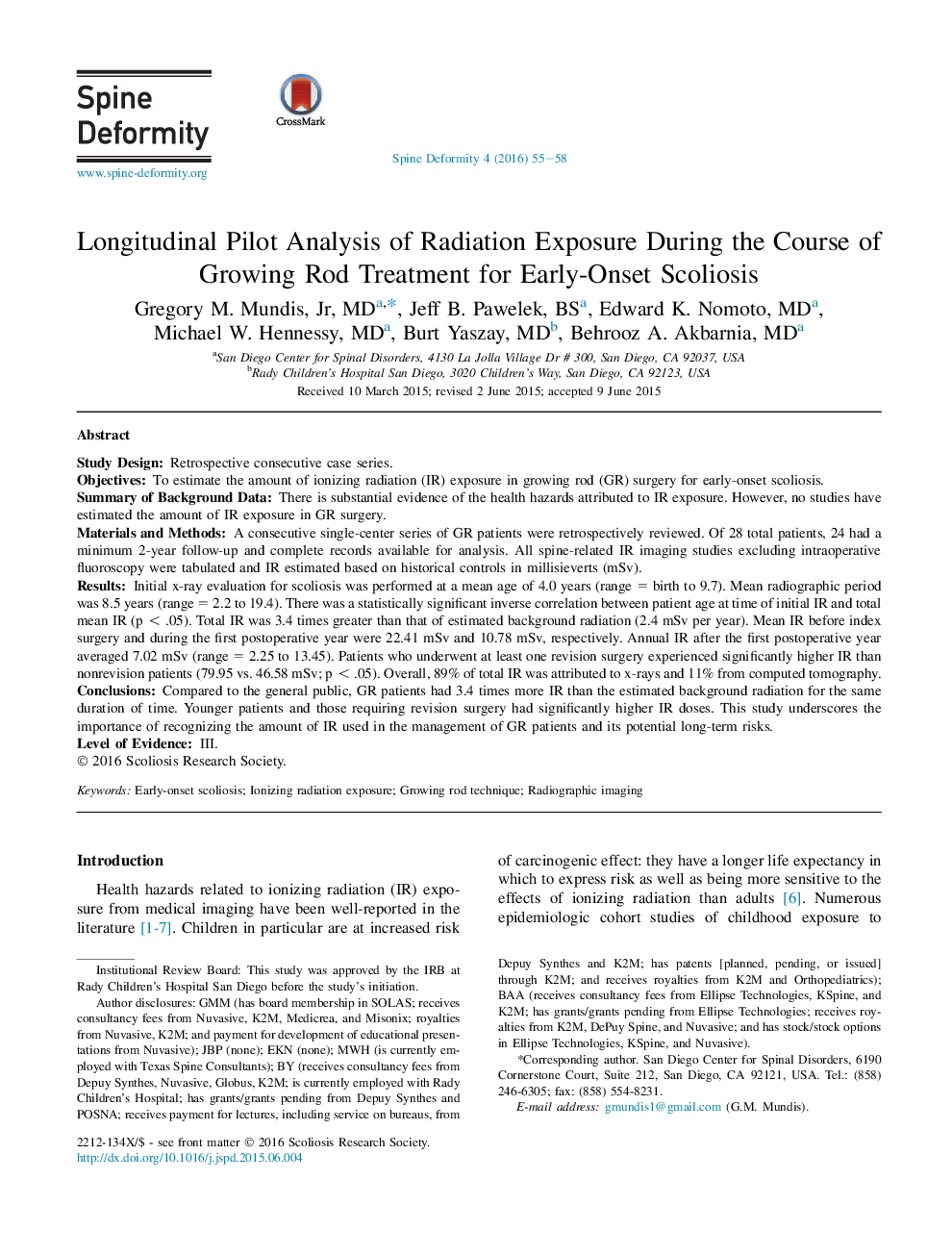| کد مقاله | کد نشریه | سال انتشار | مقاله انگلیسی | نسخه تمام متن |
|---|---|---|---|---|
| 4095485 | 1268536 | 2016 | 4 صفحه PDF | دانلود رایگان |
Study DesignRetrospective consecutive case series.ObjectivesTo estimate the amount of ionizing radiation (IR) exposure in growing rod (GR) surgery for early-onset scoliosis.Summary of Background DataThere is substantial evidence of the health hazards attributed to IR exposure. However, no studies have estimated the amount of IR exposure in GR surgery.Materials and MethodsA consecutive single-center series of GR patients were retrospectively reviewed. Of 28 total patients, 24 had a minimum 2-year follow-up and complete records available for analysis. All spine-related IR imaging studies excluding intraoperative fluoroscopy were tabulated and IR estimated based on historical controls in millisieverts (mSv).ResultsInitial x-ray evaluation for scoliosis was performed at a mean age of 4.0 years (range = birth to 9.7). Mean radiographic period was 8.5 years (range = 2.2 to 19.4). There was a statistically significant inverse correlation between patient age at time of initial IR and total mean IR (p < .05). Total IR was 3.4 times greater than that of estimated background radiation (2.4 mSv per year). Mean IR before index surgery and during the first postoperative year were 22.41 mSv and 10.78 mSv, respectively. Annual IR after the first postoperative year averaged 7.02 mSv (range = 2.25 to 13.45). Patients who underwent at least one revision surgery experienced significantly higher IR than nonrevision patients (79.95 vs. 46.58 mSv; p < .05). Overall, 89% of total IR was attributed to x-rays and 11% from computed tomography.ConclusionsCompared to the general public, GR patients had 3.4 times more IR than the estimated background radiation for the same duration of time. Younger patients and those requiring revision surgery had significantly higher IR doses. This study underscores the importance of recognizing the amount of IR used in the management of GR patients and its potential long-term risks.Level of EvidenceIII.
Journal: Spine Deformity - Volume 4, Issue 1, January 2016, Pages 55–58
